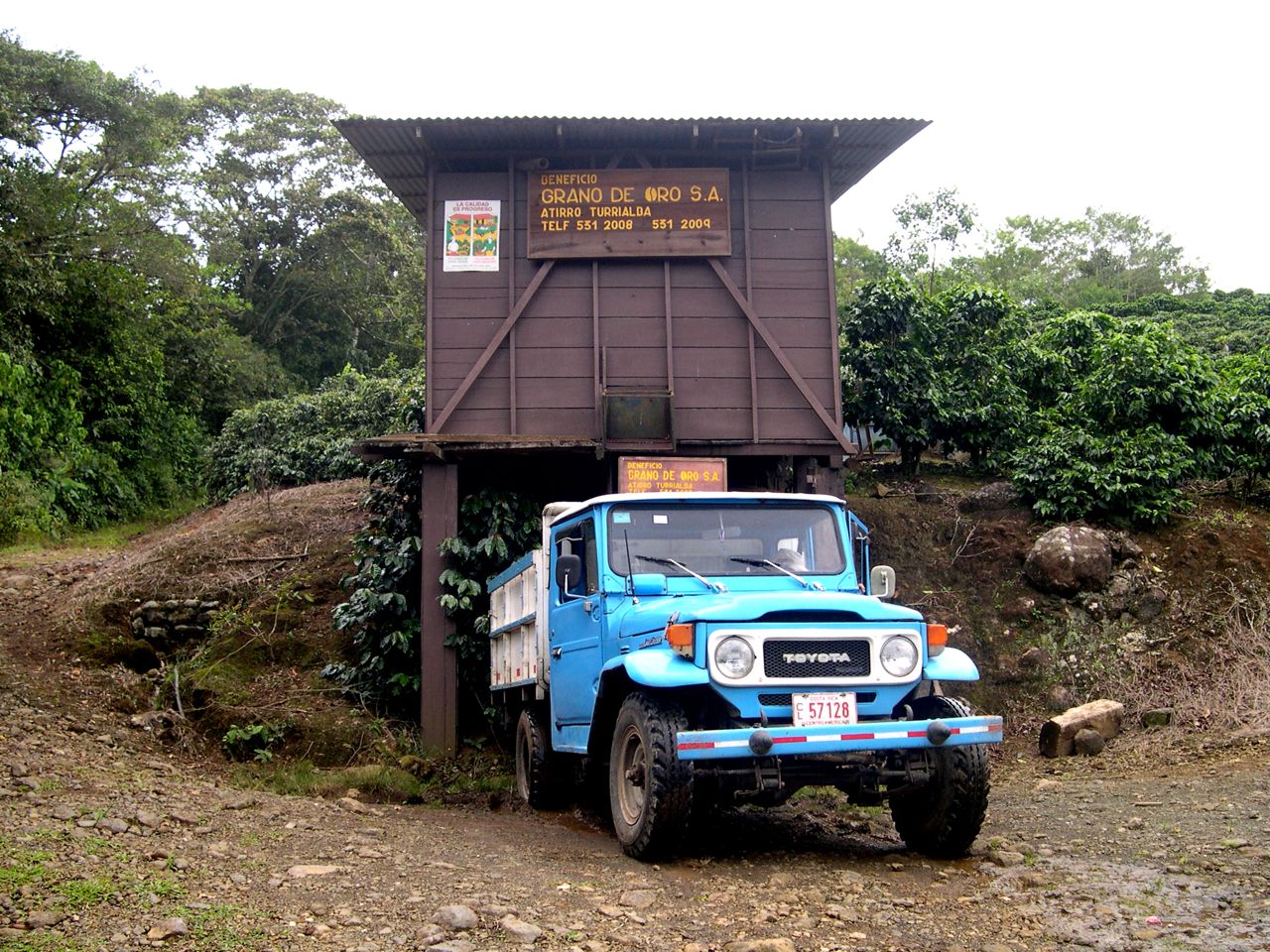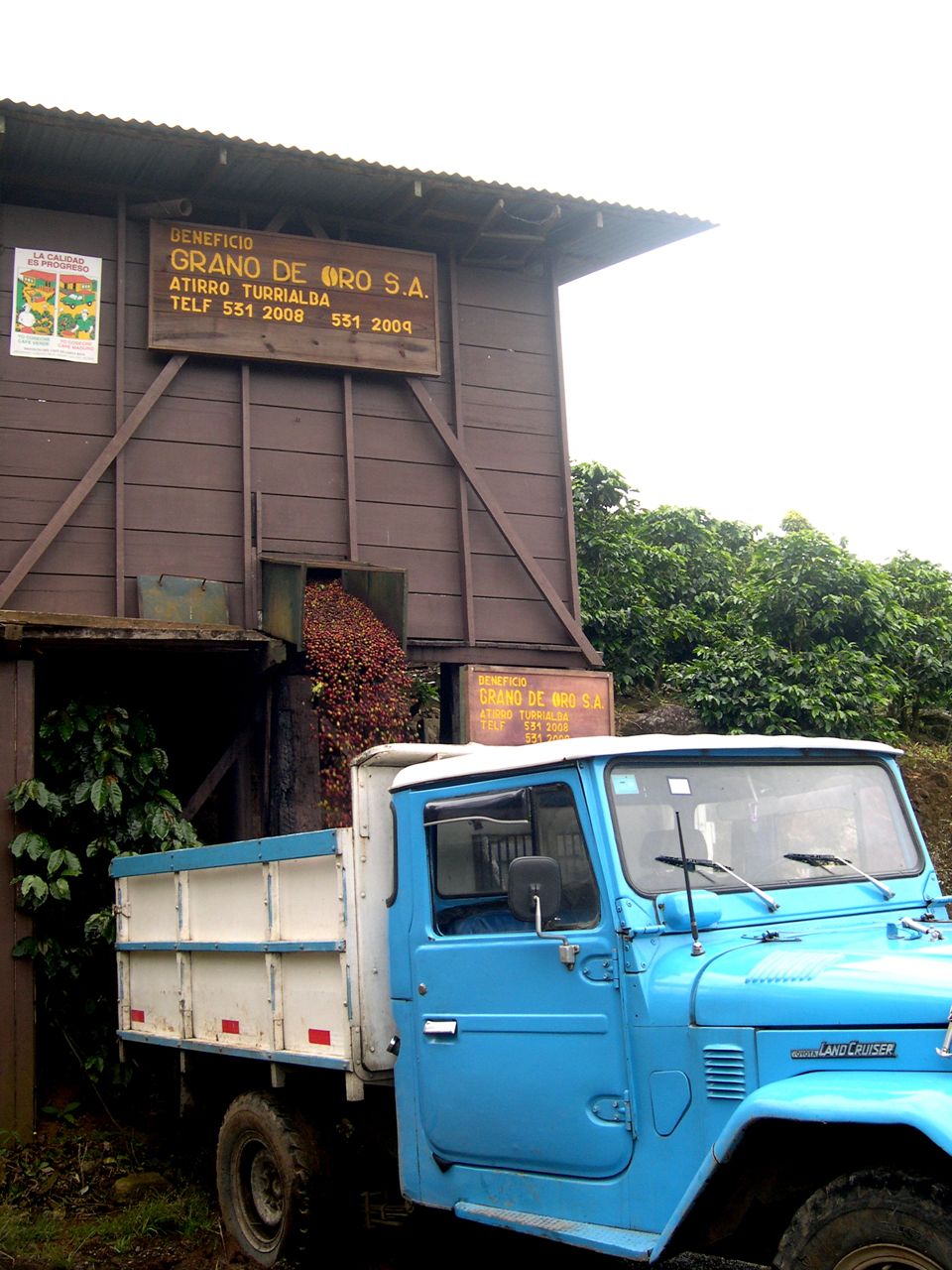Costa Rica Coffee | Cultural Heritage - Receiving Station
Posted by Goldenbean - EC on 27th Mar 2014
Costa Rica's coffee history and cultural heritage will be forever marked by the numerous ripe cherry coffee "receivers" (Receiving Stations) or Recibidores de Café that can be found throughout its territory in the many different coffee plantations. Although not as emblematic as the world famous Costa Rica Coffee Ox Cart, they are without any doubt a very representative part of the countries' agricultural landscape. So engraved in the visions and memories of those who have had the privilege of visiting the Costa Rican countryside, they are many times mistaken as common place objects.
More than 3,000 Recibidores can be found in many shapes, sizes and colors all over Costa Rica.They not only provide a rich enhancement to the coffee farm scenery. They also have their very important functionality for which they were created.
So, what exactly are they, and what is their purpose?
Recibidores are small buildings, around 375 square feet (35 square meters), which are usually made of wood and a zinc roof. These structures are raised off the ground and adjacent to a small hill or inclination ( in order to ease the unloading of coffee cherries onto trucks.) Closed off on three sides and a fourth which allows ventilation. They will be found on coffee farms very close to a main road, where the access by a truck is relatively easy. Their function is to store ripe cherries that have been picked during the day until they can be picked up by a coffee mill transport.
During coffee picking season, coffee is picked and measured in the mornings. The days shift begins early at around 6 A.M. and will usually be over around 2 PM. At this time, all workers must take their picked coffee to the foreman to be measured. He will receive it, measure and pay each picker accordingly. The ripe cherries will be measured and thrown onto a cart that is pulled by a tractor. Due to the rough geography of these farms and poor accessibility of its roads, only tractors are able to travel to the different areas of most farms. Once all the day's picked coffee has been measured, the cherries will be transported to the Recibidor where they will once again be measured by the foreman and stored. Later during the day, small or large coffee trucks will arrive to load the coffee and transport it to a local coffee mill to begin its processing.
These Recibidores only store freshly picked coffee cherries for a couple of hours. Their main purpose is to provide an easy pick up point for Coffee Mills and a way for the farms to account for the daily, weekly and monthly coffee production in an organized manner. They also have signage on them that identifies the Coffee Mill that is authorized to receive the coffee beans. 

